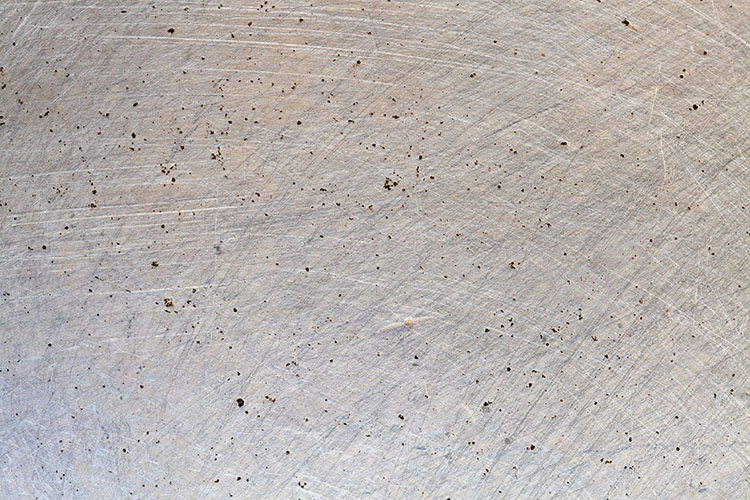Concrete is a vital part of our daily infrastructure, providing stability and durability to sidewalks, driveways, patios, and foundations. However, issues like concrete heaving and settling can compromise its integrity and appearance, leading to safety concerns and costly repairs. For homeowners and property managers in Long Island, Brooklyn, and Queens, understanding these problems is essential to maintaining property value and safety. This blog will explore the causes, signs, and professional solutions for concrete heaving and settling, along with insights into repair costs and tools like concrete grinders.
What Is Concrete Heaving?
Concrete heaving occurs when a slab or foundation is pushed upward, often due to soil expansion underneath. This expansion is typically caused by:
- Freeze-thaw cycles: Water in the soil freezes and expands, lifting the concrete.
- Tree roots: Growing roots exert upward pressure on the slab.
- Poor drainage: Excess water saturates the soil, causing it to swell.
What Is Settling Concrete?
Settling concrete is the opposite problem, where slabs sink or shift downward. Common causes include:
- Soil erosion: Water washes away the soil beneath the slab.
- Poor compaction: Insufficiently compacted soil during installation.
- Heavy loads: Excessive weight on the slab can compress the soil.
Signs of Concrete Heaving and Settling
Knowing the signs of concrete heaving and settling can help you address issues early. Look for:
- Cracks: Uneven pressure causes visible fractures in the concrete.
- Uneven surfaces: Slabs that tilt or form a trip hazard.
- Door and window misalignment: Foundation heaving can distort openings.
- Pooling water: Improper drainage on uneven surfaces.
- Separation: Gaps between slabs, walls, or adjoining structures.
Diagnosis and Professional Solutions
Proper diagnosis of concrete issues requires expertise. Professionals evaluate factors like soil type, moisture levels, and structural integrity to determine the root cause. Based on their findings, they recommend solutions such as:
- Mudjacking (Slab Jacking):
- This technique involves injecting a slurry of cement, sand, and water beneath the slab to lift it back into position.
- Ideal for minor settling issues.
- Polyurethane Foam Injection:
- A modern alternative to mudjacking, this method uses expanding foam to stabilize and lift the slab.
- Suitable for both heaving and settling.
- Drainage Improvement:
- Installing or upgrading drainage systems prevents water accumulation that leads to soil expansion and erosion.
- Tree Root Removal:
- Carefully removing invasive roots and adding barriers to prevent regrowth.
- Concrete Grinding:
- For minor heaving, a concrete grinder can smooth out uneven surfaces, eliminating trip hazards.
- This cost-effective solution is often used for sidewalks and driveways.
Foundation Heave Repair Cost
The cost of foundation heave repair varies based on the severity of the issue, the chosen repair method, and the area being serviced. Here’s a general breakdown for the Long Island, Brooklyn, and Queens areas:
- Mudjacking: $500 – $1,500 per slab
- Polyurethane Foam Injection: $1,000 – $2,500 per slab
- Foundation Repairs: $3,000 – $10,000 or more, depending on complexity
- Concrete Grinding: $4 – $8 per square foot
Investing in professional repairs not only restores the structural integrity of your property but also prevents future problems, saving you money in the long run.
Why Choose Professional Services?
DIY solutions may seem appealing but can lead to further damage if not executed correctly. Professionals bring:
- Expertise: Comprehensive knowledge of soil behavior and repair techniques.
- Advanced Tools: Equipment like concrete grinders and polyurethane injection systems.
- Durable Results: Long-lasting repairs tailored to your property’s needs.
Preventing Concrete Heaving and Settling
Prevention is always better than cure. Here are some tips to protect your property:
- Ensure proper drainage: Redirect water away from concrete surfaces.
- Maintain landscaping: Plant trees and shrubs away from concrete structures.
- Address issues promptly: Small cracks and misalignments can worsen over time.
Conclusion
Concrete heaving and settling are common issues that require timely attention to maintain safety and aesthetics. For property owners in Long Island, Brooklyn, and Queens, professional diagnosis and repair are essential to resolving these problems effectively. By investing in services like mudjacking, polyurethane foam injection, and concrete grinding, you can restore the beauty and functionality of your property.
If you’re experiencing signs of concrete heaving or settling, contact Mudjacking Contractors today. Our experienced team is equipped to handle all your concrete repair needs with precision and care.

